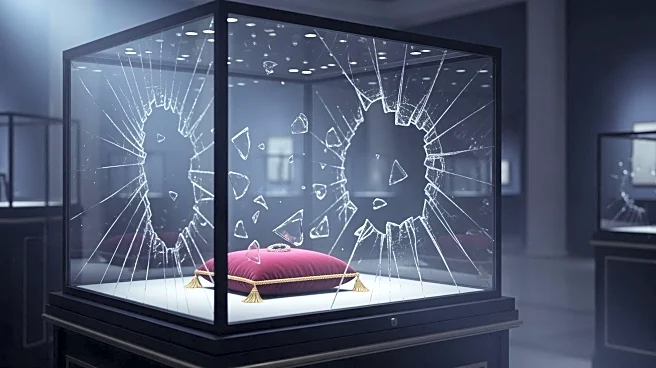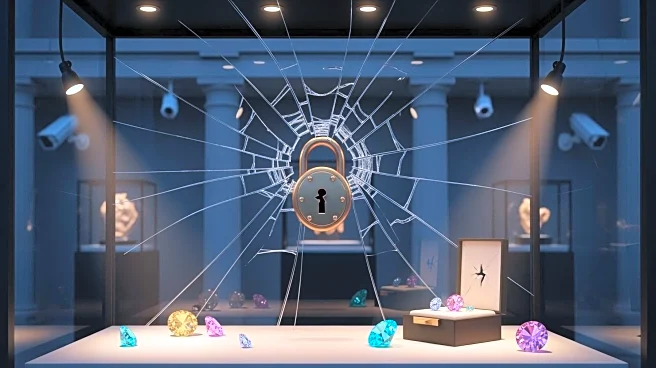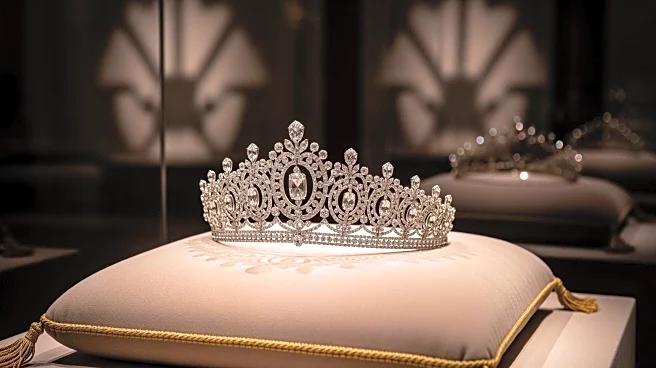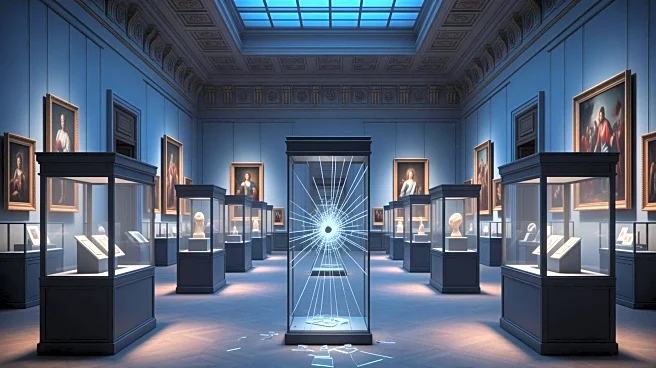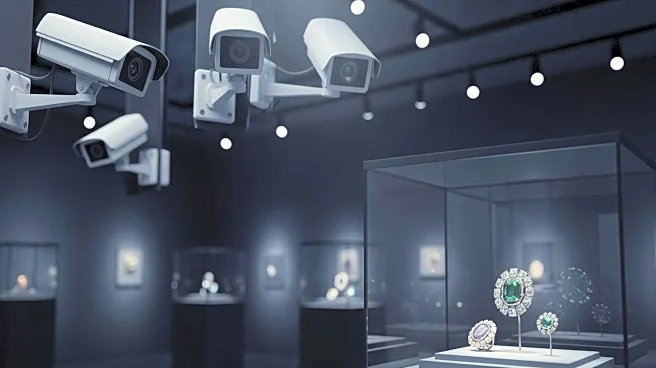What's Happening?
French authorities have arrested several suspects in connection with the theft of Napoleonic crown jewels from the Louvre Museum in Paris. The heist, which occurred last weekend, involved four men dressed
as workmen who managed to steal over $100 million worth of jewels in under four minutes. The stolen items include emerald- and sapphire-encrusted diadems, necklaces, and brooches once worn by 19th-century royals. The suspects were apprehended, with one being detained at Charles de Gaulle Airport while attempting to flee the country. The theft has shocked France and captivated art lovers worldwide, prompting a significant police investigation.
Why It's Important?
The theft of the crown jewels from the Louvre Museum represents a significant cultural loss for France, as these items are considered chapters of French history. The incident has raised concerns about the security measures in place at one of the world's most famous museums, potentially impacting tourism and national pride. The heist has also placed pressure on French President Emmanuel Macron and Louvre director Laurence des Cars to address security failures and reassure the public. The event highlights vulnerabilities in protecting national heritage and may lead to increased security protocols at cultural institutions.
What's Next?
French authorities are conducting a full security review to prevent future incidents and reassess current systems. President Macron has vowed to recover the stolen works and bring the perpetrators to justice, indicating potential legal and diplomatic efforts to retrieve the jewels. The investigation continues, with police having 96 hours to question the suspects. The outcome of this review and investigation may lead to changes in museum security policies and influence international cooperation in art theft prevention.
Beyond the Headlines
The heist underscores the ethical and legal challenges in protecting cultural heritage. It raises questions about the adequacy of current security measures and the responsibilities of institutions in safeguarding historical artifacts. The incident may prompt discussions on international collaboration to prevent art theft and improve security standards globally. Additionally, the theft's impact on France's image as a cultural leader could influence future policies and investments in heritage protection.



